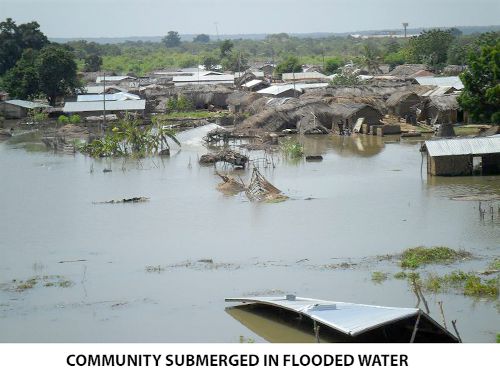
Social impacts of flooding and the need for the construction of the Pwalugu Dam
The Pwalugu dam will mitigate the frequent flooding in White Volta basin and the attendant social cost.
• Heavy rainfall from September to October 1999 caused severe floods in Ghana, including in the Upper East and Northern regions, with an estimated 290,000 people displaced, over 50 deaths, about 31,000 collapsed houses, and 117,000 acres of destroyed farmlands.
Advertisement
• At the end of October 2009, the estimated number of affected people was as follows: 290,000 displaced and over 50 deaths. About 31,000 houses collapsed and 117,000 acres of farmlands destroyed (UN-OCHA, 1999).
• In August 2007, flooding in northern Ghana was estimated to affect about 350,000 people, causing damage valued over US$130 million.
Over 156 communities in the Upper East Region and 421 communities in the Northern Region were affected; in the Upper East 31 human lives and 10,723 animal lives were lost, 90,703 people were internally displaced, 29 highways and 54 feeder roads with estimated lengths of 427km and 542km respectively were washed away.
In economic terms, the maintenance activity costs of these roads were estimated at GH₵527,713,493 for the highways and GH₵ 7,923,740 for the feeder roads.
• In August 2010, crops cultivated along the banks of the White Volta branch from Burkina Faso and the main river in communities including Kusanaba, Kobore, Bugula, Tabre, Galaka, Gozongo, Salpiiga, Sapeliga, Sakpare, Boya, Kpalsako, Kopela, Gore, Kansoogo, Zongoire Kpalsako, Dagunga, Saka, Googo, Tiego, Yarigu, Biringu, Timonde Bugit Gure, Timonde Goriga, Tanga KpaIsako, Agaago, and Gumdagowere were destroyed by flooding.
The National Disaster Management Organisation (NADMO) reported that that there were no human casualties as the majority of the people do not live close to the river and the few who did had relocated to higher ground.
Estimates were that in northern Ghana, about 700,000 people were displaced, 800 houses were submerged and thousands of acres of farmlands inundated.
• In March 2013, severe rainstorms led to flooding affecting 458 households in East Mamprusi and 369 households in West Mamprusi. Most of the affected people moved to live with relatives.
NADMO distributed rice, maize, and cooking oil; poly mats; plastic plates, cups, buckets and basins; blankets and mosquito nets; and laundry soap.
Thirty community based staff were trained to cover all affected districts with rescue and evacuations, first aid and medical referrals, community sensitisation on health and hygiene, environment clean ups and rapid assessments.
• In September 2014, there was a report of six fatalities in the Kumbungu District of the Northern Region with other affected districts including West Mamprusi.



